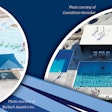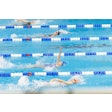
Aquatics International this week released a report on the reality of the lifeguard shortage. As outdoor pools approach their season opener, calls for lifeguards and conversations surrounding understaffing will follow. However, Aquatics International suggests that the workforce for lifeguards exists, instead, the organization points to the way businesses approach work as a key issue in bringing in more lifeguards.
Aquatics International reports that “data from the Bureau of Labor Statistics show that employment levels in lifeguarding and related jobs have remained steady post-COVID.” And yet, the American Lifeguard Association released yet another warning to the 309,000 or more outdoor pools in the U.S. regarding closure or reduced hours.
“For years, the lifeguard hiring model remained the same — and it seemed to work,” said the report. “But gradually, we started noticing the signs: Lifeguards weren’t returning like they used to, and new recruits weren’t sticking around. The job itself hadn’t changed, but what employees expected from their work experience had.”
After interviewing lifeguards who are actively working in the field, Aquatics International found that today’s lifeguards prioritize workplace flexibility, culture and engagement. The pay is not the problem.
For years, myths that low pay seasonality drives understaffing at pools have persisted, but in reality, the pay is only one of a number of factors. And, several pools reported that “Many of our full-time managers and leaders started as lifeguards. With structured pathways for growth, lifeguarding becomes a valuable stepping stone.”
With this new information, Aquatics International suggested a few actionable takeaways. Most importantly, “enhanced our onboarding and training by expanding it to include professional development, customer service, and leadership skills.” The organization also recommends “programs such as Guard of the Month, Guard Appreciation Week, and regular social media recognition. Lifeguards who feel seen and valued are far more likely to return.”
At the studied facilities that implemented these practices, Aquatics International saw a 35% increase in the rate of staff return.





































